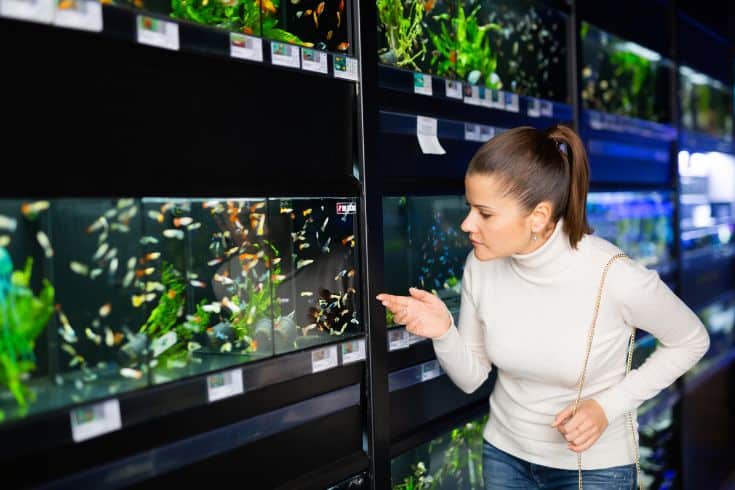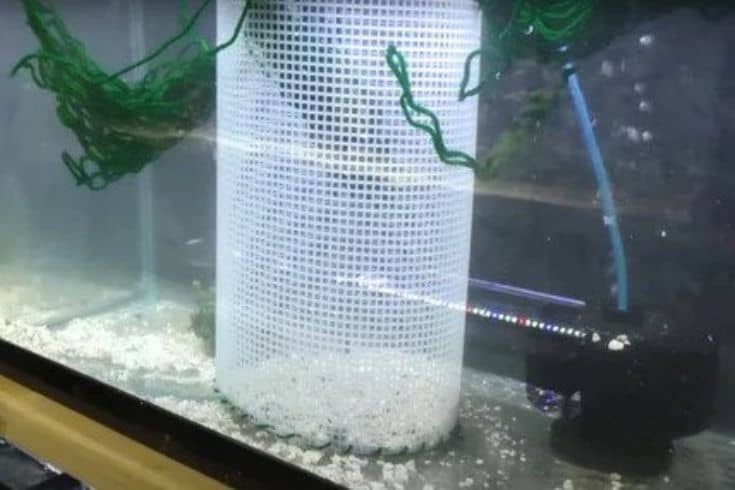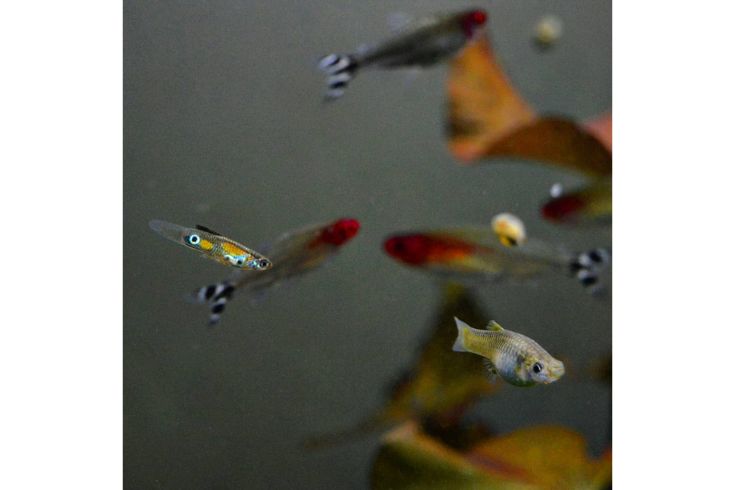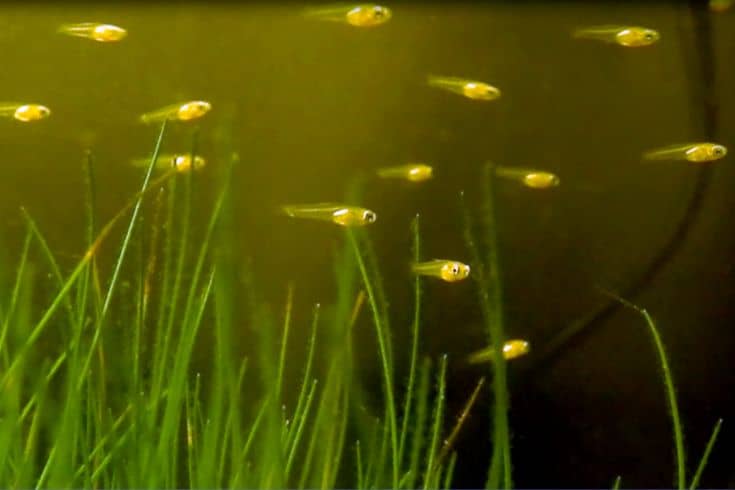Even if you’re not a professional fish breeder, the idea of breeding guppies is appealing to many amateur aquarists. Guppies are among the most popular freshwater fish in the hobby and are relatively easy to breed. The hard part, however, comes when the fry is born. Raising the fry to adulthood can be a difficult, time-consuming, but ultimately, rewarding process.
This article will give you an overview of the basics of caring for guppy fry. We’ll take a look at how to care for them at the different stages of their growth and development, from hatching to adulthood. We’ll also discuss the different types of food available, and how to keep the fry healthy and thriving.
Caring for Guppy Fry At Birth
The success of any guppy breeding program starts with the way fry are cared for when they are first born. Here are three main things to keep in mind as soon as your fry is born:
Use A Breeding Tank
Most guppies are housed in community tanks – which is a perfectly fine setup! But when it comes to breeding, the best thing for both the pregnant female and the to-be-born fry is to house them in a separate breeding tank. This usually refers to a simple setup of a plastic container or a small aquarium with some plants, a sponge filter, and a heater.

The advantages of a breeding tank are twofold: first, it gives the female guppy a safe place to give birth, and second, it gives the fry a place to grow, away from the hustle and bustle of the main tank. Keeping the water quality under control is also a much easier task when you’re dealing with a smaller volume of water.
One potential setback you may encounter is in identifying the pregnant female guppy. Well, in our experience, looking for the gravid spot or “gravid patch” is the most reliable way to spot a pregnant guppy. This is a dark spot found near the anal fin of the female guppy, and it becomes especially prominent just before the female is ready to give birth.
Separate The Parents
It may sound cruel and counterintuitive, but your baby guppies should never be housed with adult guppies. Unlike most fish, guppies are known to be prolific eaters and will not show mercy when it comes to their offspring. Other fish in a community tank might also prey on the fry, so keeping them separate is the only way to ensure their survival.
Not only does a dedicated fry tank create a safe environment, but it also facilitates optimum growth and health of the fry. Many breeders believe that the pheromones emitted by sexually mature fish can cause stress in fry, thus stunting their growth.
Consider Using A Mesh Breeding Trap
Mesh breeding traps work by allowing the fry to pass through the mesh and swim freely, while preventing the mother guppy from accessing them. This is a great way to separate a mother from her fry after the birthing process is complete. The trap also serves as a convenient way to collect the fry for further observation or for transferring to a dedicated fry tank.

We highly recommend using a mesh breeding trap, especially if you are a beginner in guppy breeding. It’s affordable and proven to be an effective tool for many guppy breeders. However, you should be aware that these traps can also be a bit of a hassle to clean and maintain. We think it’s well worth the effort, though! Nothing is more important than the safety of your fry.
Raising Guppy Fry
Great! So these are the basics of caring for your guppy fry at birth. Now, let’s talk about the next steps in raising your fry to adulthood.
Feeding Them Appropriately
Although most care guides recommend feeding your newborn fry between 3-4 times per day, some professional breeders prefer to do so between 6 to 10 times. At the heart of it all, you just need to ensure that your fry has ready and frequent access to a variety of food that makes up a proper diet. Feeding small meals several times a day is important, particularly in the first 3 months of your fry’s lives.
In their formative stage, guppy fry should be fed live food sources such as baby brine shrimp. You do not need to worry about plant-based foods at this juncture. While adult guppies may require a balanced diet, baby guppies rely primarily on protein and fat sources to grow and develop.
This also means that flake foods should not be introduced in the first few weeks of your fry’s life. They aren’t nutrient-dense enough for guppy fry, as they’re formulated for adult fish with omnivorous diets. The combination of carbohydrates, vegetables, and protein sources used in these commercial food sources is not suitable for young guppy fry.
Separate The Sexes As Early As Possible

There is a time and place for guppy breeding, but you want to control when it happens. Guppies have earned a well-deserved reputation for being prolific breeders, and when they reach sexual maturity (usually around 3 months old), they won’t hesitate to start reproducing. This is where it can be helpful to separate the female fish from the males, placing them in a separate aquarium.
Professional breeders do their best to separate the sexes as early as possible, to avoid any accidental fry production. However, this requires a trained eye – you’ll need to look for subtle physical differences between the sexes. The males tend to have brighter colors, longer fins, and a gonopodium (a sex organ) located at the base of their anal fin, while female guppies are usually larger, with a rounder body shape.
Of course, this endeavor does require more resources from your end. You will need two separate tanks or plastic containers, each equipped with its own filter, heater, and other necessary equipment. But most successful guppy breeders appreciate being able to select ideal breeding pairs at their leisure, so the extra effort is well worth it.
Be Prepared To Take Some Losses
Culling is a controversial subject. On the one hand, selectively culling weaker or deformed fry can help improve the strength of the gene pool. When you’re breeding guppies, you want to do right by the species and ensure that only the best genes are passed down. On the other hand, culling can be a heart-wrenching process, and it’s not for everyone.
Only you can decide whether or not to cull your fry. However, it’s important to note that in some cases, culling can be an ethical way to reduce suffering. For example, fish with severe spinal deformities or genetic defects may never have a normal life, no matter how much care you provide. In these cases, it may be kinder to cull the fish and allow them to pass on peacefully.

At the end of the day, it’s important to remember that some fry losses are inevitable. As long as you are providing the best care for your fry, you are doing your best, and that’s all you can do. And if you do decide to cull, make sure it is done humanely and respectfully. Most professionals recommend using clove oil as a humane way to euthanize fish.
Maintain Ideal Water Parameters
Keeping your tank water clean is extremely important regardless of what life stage your guppies are in, but it’s particularly crucial when raising guppy fry. At this stage, young guppies are very sensitive to water quality, and even minor fluctuations can cause serious health problems. To make sure your fry stay healthy and comfortable, you’ll need to keep track of your water parameters.
The water temperature is also important – guppies do best in warm water between 75 and 80 degrees Fahrenheit. You should also monitor the pH level of your tank, which should be between 6.8 and 7.4 for optimal health. Finally, you’ll want to make sure your tank is properly cycled (with ammonia and nitrites at 0 ppm) before adding any fish.
Having a good filtration system in place is also important for keeping your guppy fry healthy. When it comes to filtration, you’ll want to make sure you have a filter with a gentle flow, as young guppies can easily be sucked into a powerful filter intake. You’ll also want to make sure you are regularly performing partial water changes to keep the tank clean.
You can go a long way toward keeping your guppy fry healthy and safe by maintaining ideal water conditions.
Observe for Signs of Stress
Last but not least, it’s important to keep an eye out for signs of stress in your guppy fry. Stress can be caused by a variety of things, including improper water parameters, overcrowding, or aggression from other fish. Though stress may not immediately kill your guppies, it can weaken their immune systems and make them more susceptible to disease.
Signs of stress in guppy fry include lethargy, lack of appetite, clamped fins, and discoloration. If you notice any of these signs in your fry, make sure to take immediate action. Check your tank parameters and look for any signs of overcrowding or aggression. If necessary, separate any aggressive fish and perform a water change to bring your tank back up to ideal parameters.
Identifying and addressing signs of stress in your guppy fry early on is key to keeping them healthy. Though it may be difficult to narrow down the cause, it is important to take the necessary steps to ensure your fry are living in the best possible environment. If you ever find yourself in doubt, consulting a knowledgeable fishkeeper or veterinarian can help you determine the best course of action.
The Takeaway
Raising guppy fry is a rewarding, yet challenging endeavor. You’ll need to be prepared to take some losses, but with the right care and dedication, you can help ensure your fry grow up to be strong and healthy. Make sure to separate the sexes as early as possible, maintain ideal water parameters, and watch your fry for signs of stress. With the right care, your guppy fry can bring you enjoyment for years to come!
We hope this article has been helpful in guiding you through the process of raising guppy fry. If you have any further questions, don’t hesitate to contact us for additional advice. And if you know someone who’s thinking of breeding guppies or is simply interested in learning more, feel free to share this article with them. Good luck, and happy breeding!
